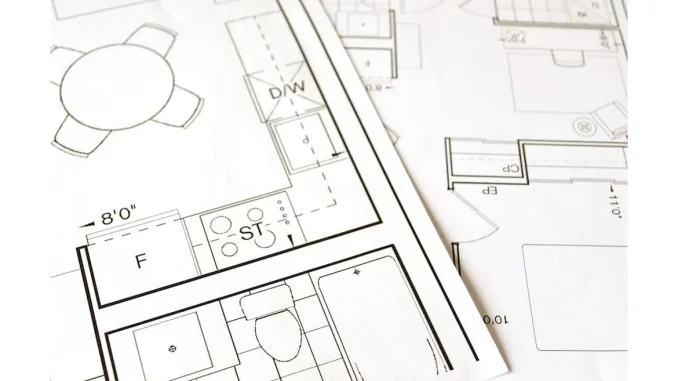
In the dynamic realm of urban development, comprehending the intricacies of planning and building regulations is paramount for fostering safe, sustainable, and community-centric growth. The labyrinth of rules and guidelines that dictate the design, construction, modification, and maintenance of structures may appear overwhelming, yet it is indispensable in sculpting our built environment.
Read more about sustainable development.
Central to the planning process is the Local Planning Authority (LPA), the custodian responsible for granting planning permissions. “The role of the LPA is to ensure that any proposed development aligns with local and national planning policies,” elucidates Jane Smith, a senior planning officer at Birmingham City Council. This role necessitates a meticulous evaluation of a project’s environmental, social, and economic ramifications. One critical component of this evaluation is the Environmental Impact Assessment (EIA). For substantial projects, an EIA is requisite to appraise the potential environmental consequences. “An EIA can be transformative,” asserts environmental consultant Mark Green. “It scrutinises factors ranging from noise pollution to biodiversity loss, thereby ensuring the sustainability of the development.”
Building regulations, distinct from planning permissions, concentrate on the technical and safety dimensions of construction. These regulations guarantee that buildings are safe, accessible, and energy-efficient. “Building codes are the unsung heroes of construction,” remarks architect Laura Brown. “They govern everything from fire safety to structural integrity.” Building control is a vital element in this context. Unlike planning permission, which pertains to the use and appearance of the building, building control ensures that the actual construction complies with all necessary regulations. “Building control exists to safeguard both the occupants and the public,” explains building inspector John White.
Permitted development rights obviate the need for planning permission for certain minor changes, such as small extensions or loft conversions. However, even these minor modifications sometimes necessitate neighbour consultation. “The Neighbour Consultation Scheme ensures that those living nearby are apprised of and can comment on proposed changes,” says planning consultant Rachel Thompson. Additionally, planning is not solely about new developments but also about preserving heritage. Listed buildings enjoy additional protections to conserve their historical and architectural significance. “Working on a listed building is both a privilege and a challenge,” states heritage architect Tom Harris. “Modern needs must be balanced with historical preservation.”
Community engagement is another pivotal aspect. Section 106 agreements are legal accords between developers and the LPA to alleviate the impact of new development on the local community. These agreements can encompass provisions ranging from affordable housing to funding for local schools and infrastructure. Similarly, the Community Infrastructure Levy (CIL) is a charge that local authorities can impose on new developments to fund the infrastructure required to support them. Green Belt land development is stringently restricted to conserve open spaces and prevent urban sprawl. “Green Belts are crucial for curbing the uncontrolled spread of urban areas,” notes urban planner Emma Clark. “They protect the environment and furnish recreational spaces for the community.”
The multifaceted nature of planning and building regulations serves as both a safeguard and a challenge. These regulations ensure that developments are safe, sustainable, and aligned with community needs, yet their complexity can be intimidating for individuals and developers. The LPA’s role is pivotal in navigating this complexity, balancing development needs with conservation and community welfare. The introduction of EIAs and Section 106 agreements has imbued the process with layers of scrutiny and community involvement, ensuring that developments benefit not only developers but also the broader community. However, this complexity can lead to delays and increased costs, posing particular challenges for smaller developers.
Looking forward, the planning process is poised to become even more nuanced, with an increasing emphasis on sustainability and community involvement. The advent of smart cities and green building practices will necessitate new regulations and more comprehensive EIAs. “The future of planning is green,” predicts urban planner Sarah Johnson. “We will witness a greater focus on renewable energy, sustainable materials, and eco-friendly designs.” Technological advancements also have the potential to streamline the process. Digital planning applications and virtual consultations could facilitate greater engagement from both developers and the public. “Technology has the potential to revolutionise planning,” says tech consultant David Lee. “Imagine submitting a planning application with a few clicks or attending a consultation meeting from your living room.”
Ultimately, while the framework of planning and building regulations is intricate, it is essential for ensuring safe, sustainable, and community-focused development. As the world progresses, these regulations will continue to evolve, adapting to new challenges and opportunities. For all stakeholders in the development process, from architects and builders to policymakers and community members, understanding and navigating this complex landscape is crucial. By embracing principles of safety, sustainability, and community engagement, we can ensure that our built environment is not only functional but also enriching and harmonious for all.


Be the first to comment